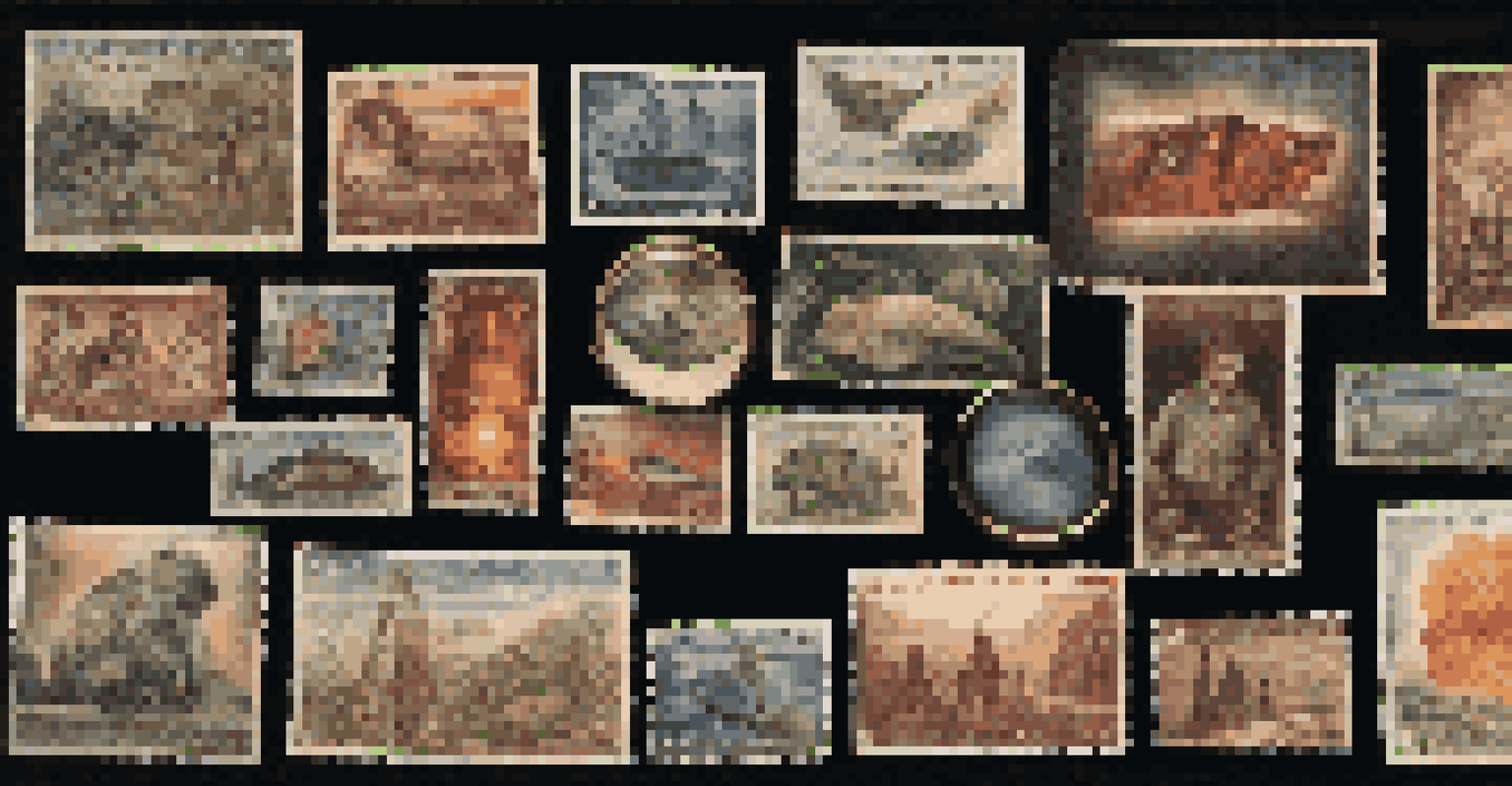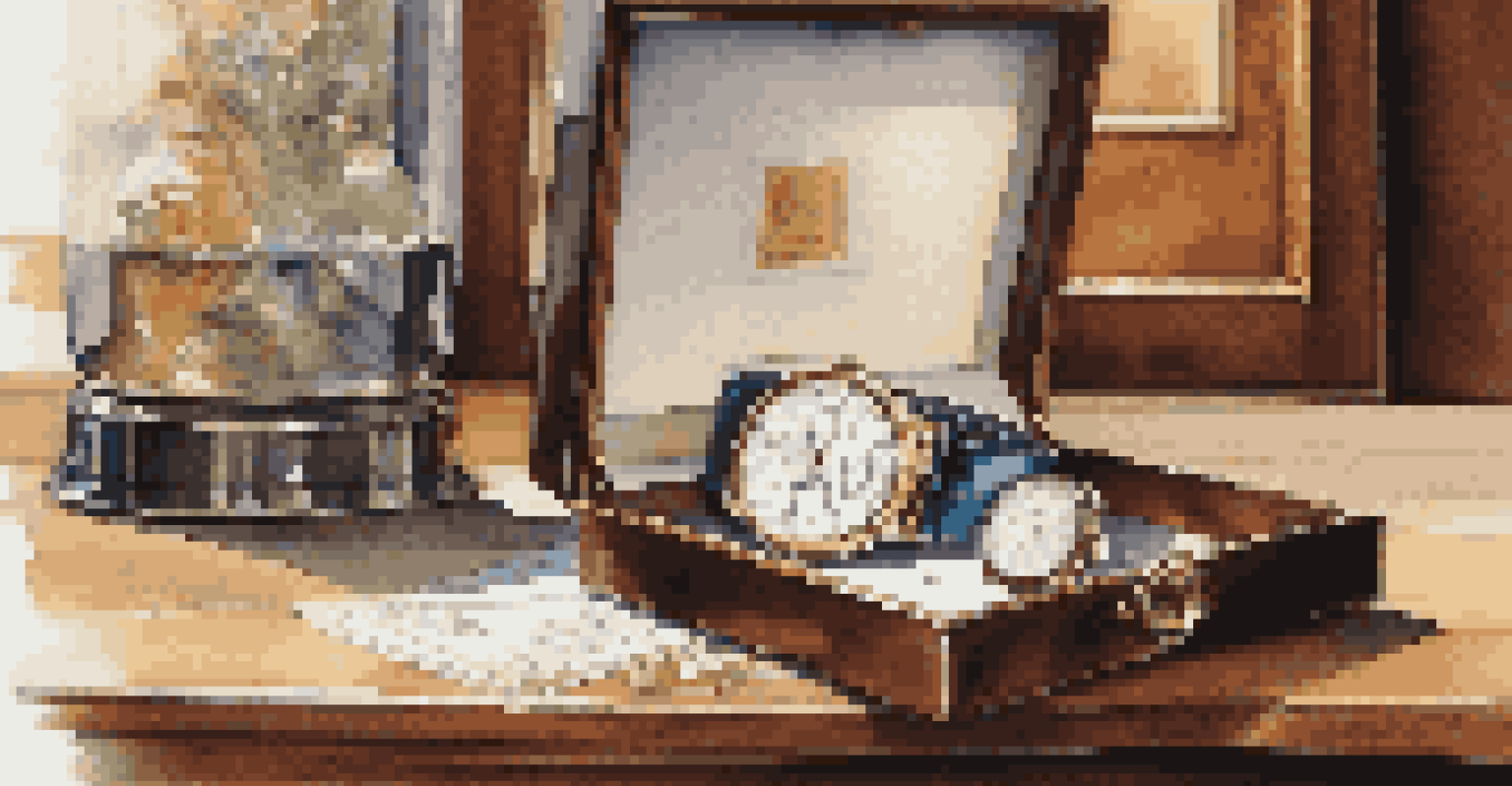Evaluating the Performance of Collectibles as Investments

Understanding Collectibles: What Makes Them Valuable?
Collectibles are items that people find interesting or nostalgic, ranging from stamps to rare coins to vintage toys. Their value often hinges on factors like rarity, condition, and demand. For instance, a limited-edition baseball card can fetch thousands if it's in mint condition and sought after by fans.
Collecting is a way of living, a way of seeing the world, and a way of connecting with the past.
The emotional connection people have with collectibles can drive their value, making them unique compared to traditional investments like stocks. However, it’s essential to remember that this emotional aspect can also lead to volatility in pricing. What’s hot one year might be forgotten the next, so staying informed is key.
In short, understanding what makes collectibles valuable is crucial before investing. This knowledge helps you identify potential growth areas and make informed decisions that align with your investment goals.
Market Trends: How to Spot Collectible Investment Opportunities
To evaluate collectibles as investments, keeping an eye on market trends is essential. This involves tracking auction results, attending collector shows, and following online forums where enthusiasts discuss emerging trends. For example, the sudden rise in popularity of Funko Pop figures shows how quickly trends can shift.

Utilizing platforms like eBay or specialized auction houses can provide insights into price fluctuations and demand. These resources allow collectors and investors to gauge the market landscape more accurately. Just like in any investment, timing can play a significant role in maximizing returns.
Know What Drives Collectible Value
Factors like rarity, condition, and emotional connection significantly influence the value of collectibles.
By staying updated on industry news and trends, you can better position yourself to seize opportunities. This proactive approach not only enhances your collectible knowledge but also boosts your chances of making profitable investments.
Evaluating Condition: The Importance of Grading Collectibles
The condition of a collectible can dramatically influence its value. Collectibles are often graded on a scale, with higher grades commanding higher prices. For example, a comic book graded a 9.8 will be worth significantly more than the same title graded a 5.0.
The greatest investment is in the investment of yourself. The more you learn, the more you earn.
When investing, it’s crucial to understand how grading works and to assess items carefully. This might mean consulting a professional grader or learning the grading criteria yourself. Remember, an investment in collectibles can quickly turn sour if the condition is overlooked.
Ultimately, condition affects both the intrinsic and resale value of collectibles. Being diligent about grading can ensure that you make informed purchases and retain value over time.
Authenticity Matters: Avoiding Counterfeits and Fakes
In the world of collectibles, authenticity is everything. Counterfeit items can flood the market, especially for high-value pieces like vintage watches or signed memorabilia. To safeguard your investment, always seek out certification from recognized authorities or experts.
Verification can involve checking provenance, which is the history of ownership of an item. An item with a clear and documented ownership history is generally more valuable and trusted. Additionally, learning to identify key characteristics of genuine items can also help you steer clear of fakes.
Stay Informed on Market Trends
Monitoring auction results and collector discussions helps identify investment opportunities in collectibles.
Investing in collectibles without verifying authenticity can lead to significant financial losses. Therefore, always prioritize verification as part of your purchasing process.
Diversification: Balancing Collectibles in Your Investment Portfolio
Just like in any investment strategy, diversification is key when it comes to collectibles. Rather than putting all your eggs in one basket, consider spreading your investments across various categories, such as art, sports memorabilia, and vintage toys. This approach minimizes risk and can enhance overall portfolio performance.
Diversification allows you to benefit from different market trends, as various collectible categories can perform differently over time. For example, while vintage comics may thrive in one market climate, classic cars might appreciate in another. By having a varied collection, you can cushion against potential losses.
Ultimately, a well-rounded portfolio can lead to more stable returns and reduced volatility. So, think carefully about how collectibles fit into your broader investment strategy.
The Emotional Side of Collecting: Passion vs. Profit
Collecting is often driven by passion, whether it’s a love for art, nostalgia for childhood toys, or admiration for historical artifacts. However, when considering collectibles as investments, it's vital to balance this passion with a profit mindset. Being too emotionally invested might cloud your judgment when it comes time to sell.
Finding a harmony between enjoyment and investment can lead to a more fulfilling experience. For instance, if you truly love a particular item, you might be more inclined to hold onto it during market fluctuations, potentially leading to better returns in the long run.
Authentication is Crucial
Verifying the authenticity of collectibles is essential to avoid financial losses from counterfeits.
In the end, while passion can be a powerful motivator, it’s important not to let it overshadow sound investment principles. Striking a balance can lead to both personal satisfaction and financial success.
Exit Strategies: Planning for the Future of Your Collectibles
Every investor should have an exit strategy, and collectibles are no exception. Whether you plan to sell your items at auction, through a dealer, or online, having a clear plan can help maximize your returns. Consider factors like timing, market conditions, and your personal financial goals when developing your strategy.
It’s also crucial to keep detailed records of your collectibles, including purchase prices, grading, and any related documentation like certificates of authenticity. This information can be invaluable when it comes time to sell, as it helps establish your item's value and provenance.

By planning ahead for the eventual sale of your collectibles, you can make more informed decisions and increase your overall profitability. A well-thought-out exit strategy can ensure that your investment pays off when the time is right.